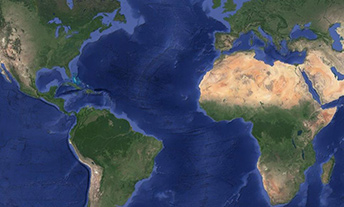
William Borucki
Science Principal Investigator - NASA Kepler Mission
Contents
- Where are you from?
- Describe the first time you made a personal connection with outer space.
- How did you end up working in the space program?
- What is a "Science Principal Investigator" for the Kepler Mission?
- Tell us about a favorite moment so far in your career.
- Who inspired you?
- What advice would you give to someone who wants to take the same career path as you?
- What do you do for fun?
- If you were talking to a student interested in science and math or engineering, what advice would you give them?
- Read More
- Video and Images
- Where are they from?
Where are you from?
I grew up in Delavan, Wis. Currently, I am living in Sunnyvale, Calif.
Describe the first time you made a personal connection with outer space.
I remember looking through a telescope at a cub scout outing in a dark forest on a dark night with the sky filled with stars.
How did you end up working in the space program?
As a boy I used to like to launch homemade rockets, and when I finished college with a master’s in physics, the only organization I applied to for a job was NASA. I have been working for NASA ever since.
Persistence is required because of the endless obstacles that must be overcome to succeed.- Bill Borucki
What is a "Science Principal Investigator" for the Kepler Mission?
In the early 1980’s I published a paper describing how we could detect exoplanets (planets in other solar systems) using photometry. People pooh-poohed the idea. They said that there was no technique for making these kinds of observations. But now Kepler (for which I am the Principal Investigator) is orbiting in space and making observations; observations that contribute to our understanding of how planetary systems form and evolve from the gas and dust disks that give rise to both the stars and their planets. The data from Kepler will have a major impact, especially if we find lots of planets like Earth orbiting in the habitable zones of their stars. Then we’ll know it’s likely that we aren’t alone, and that someday we might be able to join other intelligent life in the Universe.
Tell us about a favorite moment so far in your career.
6 March 2009 is a favorite day for me. This is the day when my family and I watched the launch of the Kepler mission. I’d been working on this idea for twenty-five years, so my kids and grandkids have heard about it since they were born. They were delighted to be at the launch, which was magnificent. The solid rockets looked like sparklers as they fell away from the rocket; it was like the spirit of all the team was being launched into space after dedicating so much time and effort to get it into orbit.
Who inspired you?
Ray Bradbury and his wonderful stories have inspired me greatly in my life.
What advice would you give to someone who wants to take the same career path as you?
Grow a thick skin and be persistent. Why? A thick skin is needed to handle all the criticism of what you are trying to do and how you are doing it. Persistence is required because of the endless obstacles that must be overcome to succeed.
What do you do for fun?
I like to hike to remote areas to search for mineral specimens. One of my favorite spots for hiking is Pinnacles National Monument. And the mountains of Colorado, Montana and Utah are great for mineral hunting.
If you were talking to a student interested in science and math or engineering, what advice would you give them?
Don’t do it unless you are willing to put in an enormous amount of time and effort. If you do, then you will find your professional life forever new and challenging.
Read More
Video and Images
Lift-off Video of the Kepler Mission
William Borucki Talking About the Kepler Mission
Where are they from?
Planetary science is a global profession.



























